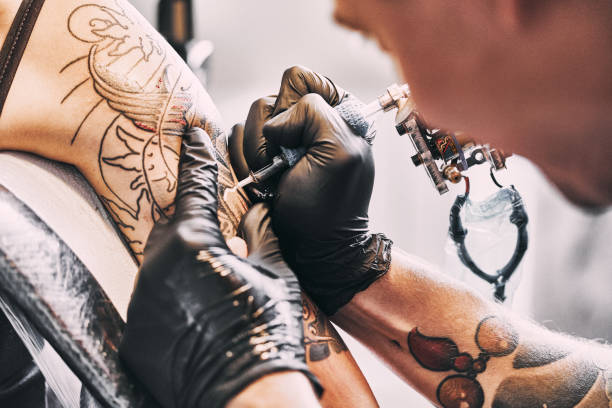How to evaluate an artist's portfolio and technique
Choosing the right artist for a new piece of bodyart starts with a careful review of their portfolio and an informed consultation. This short guide outlines practical steps to assess style, technique, hygiene, equipment, and realistic healing expectations so you can make a grounded decision for work in your area.

Evaluating an artist’s portfolio and technique is about more than liking a single image; it involves assessing consistency, technical skill, and professional practices that affect design, safety, and healing. A thorough review of past work, combined with an in-person consultation, reveals how an artist uses ink and pigments, handles stencils and needles, and follows sterilization routines. Use these criteria to compare studios and artists in your area and to prepare questions before you book an appointment.
Portfolio: what to look for
A portfolio should show a range of completed pieces, not just staged photos. Look for clear images of healed tattoos as well as fresh work to evaluate how pigments settled into skin over time. Consistency across similar styles indicates reliable results; if a portfolio contains only one very polished piece surrounded by weaker samples, that suggests variability in execution. Pay attention to line quality, color saturation, shading transitions, and how designs conform to body contours. Strong portfolios include diverse placements and skin types, demonstrating the artist’s ability to adapt a design for different anatomy and movement.
Artist: assessing skill and technique
Technique shows up in details: smooth gradients, consistent line weight, and clean edges when needed. Examine fine-line work, black-and-grey realism, and color pieces to see where an artist’s strengths lie. During a consultation, ask about the tools they use and how long they’ve practiced particular styles—experience with a technique often correlates with fewer touch-ups. Observe how the artist talks about design adjustments and whether they explain how a stencil will be positioned on your body; clear explanations indicate a thoughtful approach to composition and execution.
Design, stencil, and pigments
A sound design process begins with a clear consultation and ends with a well-placed stencil on the skin. Review before-and-after stencil photos if available and ask how much custom work is included versus flash designs. Inquire about pigments: reputable artists can explain pigment types, potential fading behavior, and color choices for different skin tones. Proper stencil alignment and consideration of muscle movement and stretch are crucial for long-term appearance. A thoughtful artist will adapt a design so it ages gracefully rather than forcing a design that will distort with body changes.
Hygiene and sterilization practices
Hygiene is non-negotiable. Confirm that the studio maintains visible licensing and that the artist follows single-use needle policies, gloves, and surface disinfection between clients. Ask how instruments are sterilized and whether autoclaves are used and properly maintained. Look for sealed, single-use pigment caps and unopened needles; proper disposal of sharps is another sign of professionalism. If something seems lax—unclean workspaces, reused ink caps, or unclear sterilization descriptions—consider other local services. This article is for informational purposes only and should not be considered medical advice. Please consult a qualified healthcare professional for personalized guidance and treatment.
Needle, equipment, and safety standards
Understanding needle selection and machine setup helps you evaluate technical competence. Different needle groupings and machine configurations are appropriate for lining, shading, or packing color—ask the artist which needles they plan to use and why. High-quality machines, well-maintained power supplies, and properly calibrated equipment reduce the risk of blowouts and uneven deposits of ink. A professional artist should welcome questions about their gear and offer transparent answers about maintenance and replacement schedules for needles and disposable items.
Aftercare and healing expectations
A good artist provides clear aftercare instructions that cover initial cleaning, recommended ointments, sun protection, and signs of infection. Ask how the artist handles follow-up touch-ups and what timeline they expect for color settling and healing. Look for examples in portfolios that include healed photos at different stages—this indicates realistic communication about healing. Proper aftercare advice, combined with sterile technique and correct pigment placement, materially affects long-term appearance and reduces complications during the healing process.
Conclusion
A careful evaluation combines visual evidence from a portfolio with direct questions about technique, equipment, hygiene, licensing, and aftercare. Focus on consistency in healed results, transparent explanations from the artist, and observable studio safety practices. These factors together give the best sense of whether an artist can deliver a design that will age well and heal predictably.






